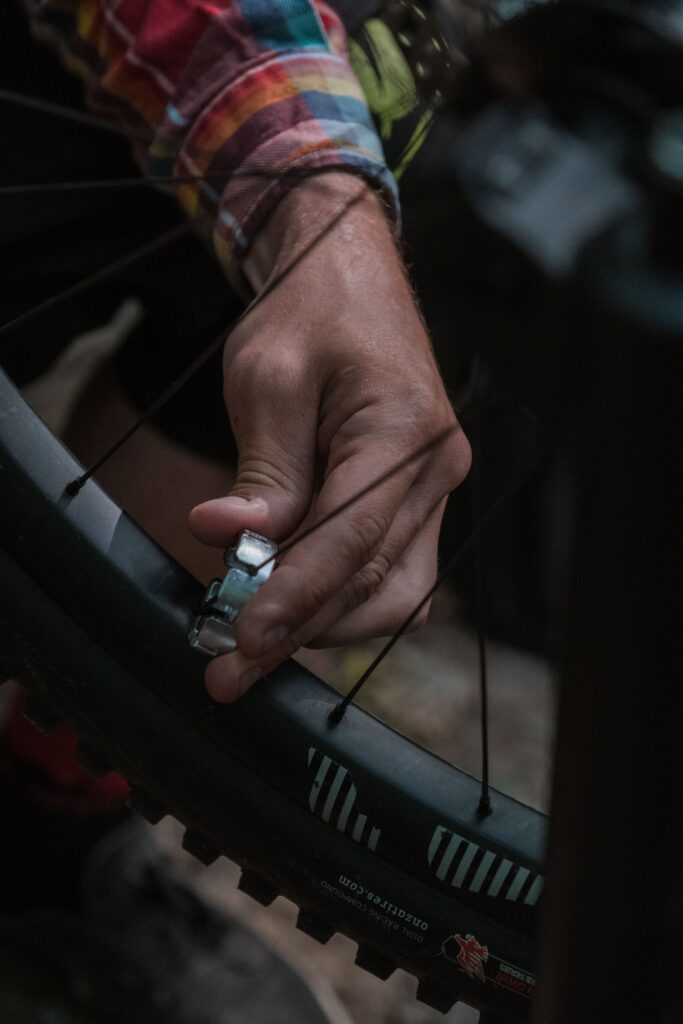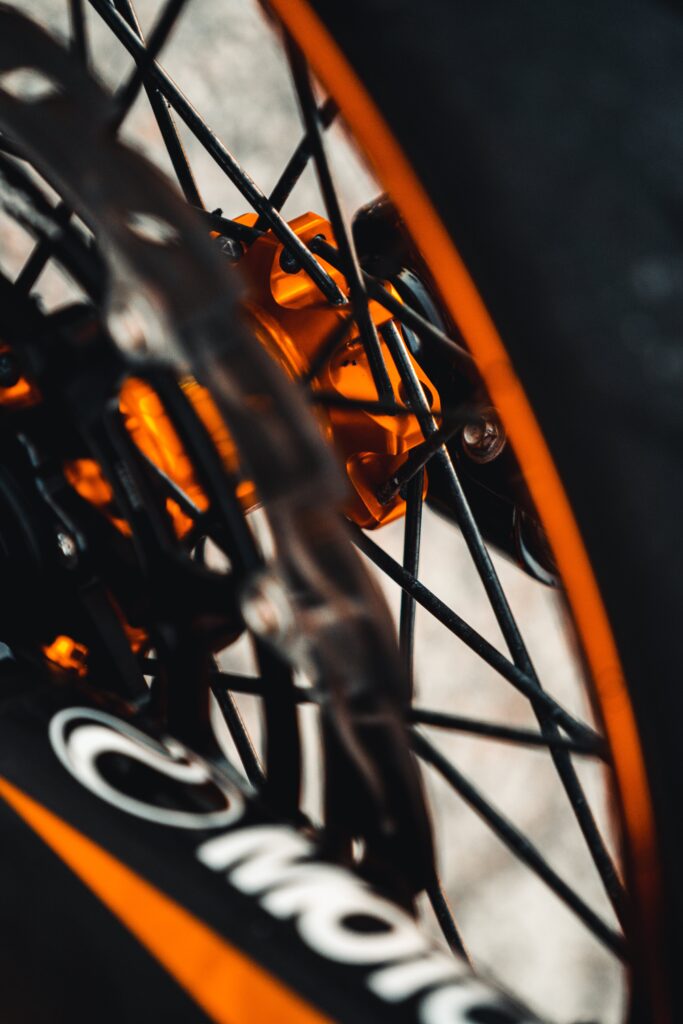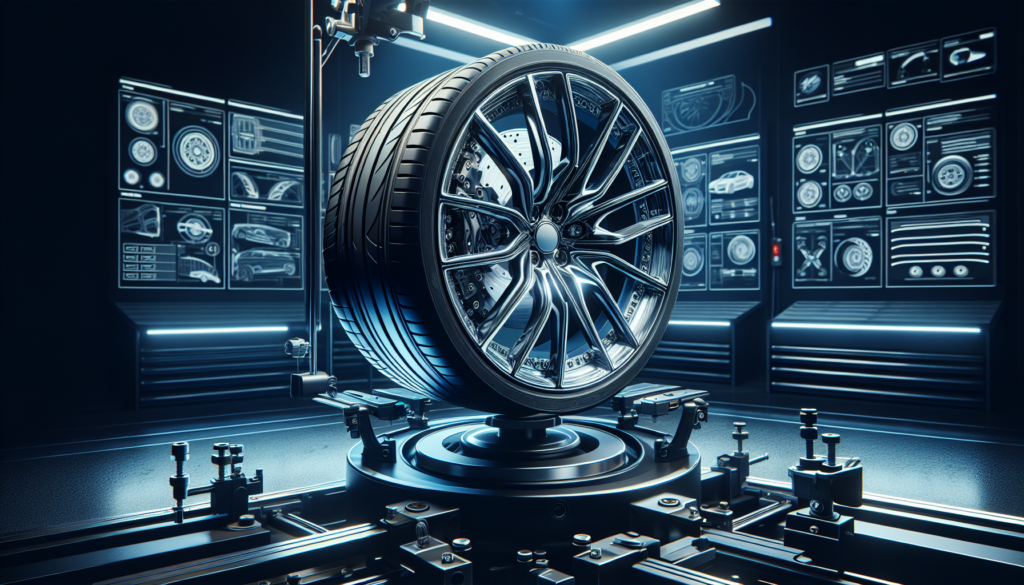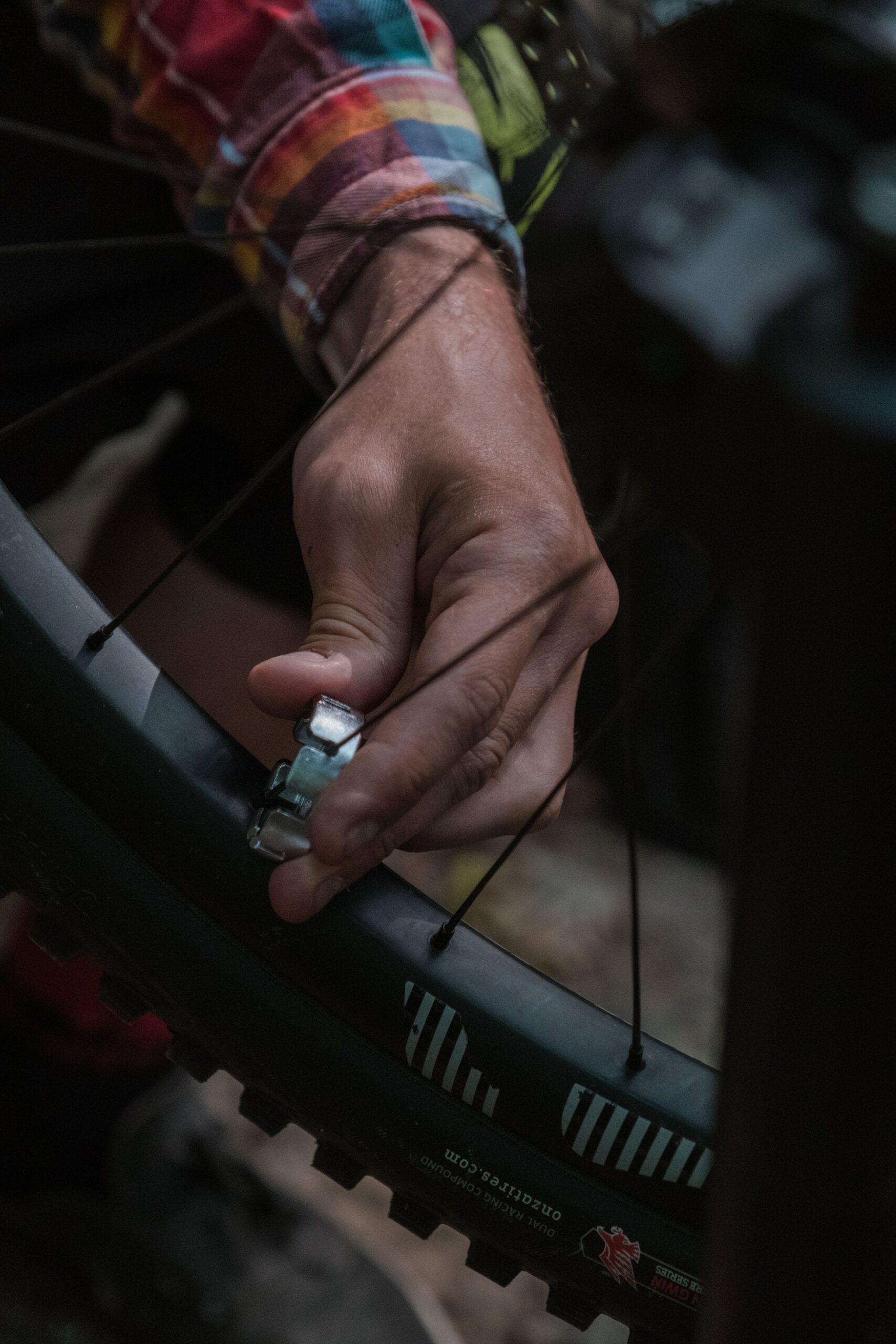Maintaining proper wheel alignment is essential for a smooth and safe ride, especially after servicing your vehicle. So, how can you ensure your wheels stay aligned? In this article, we’ll explore some simple yet effective tips to help you maintain the correct alignment of your wheels, ensuring a comfortable and secure driving experience. Whether you’re a seasoned driver or a newbie, these practical steps will keep your car on the right track. So, let’s get started and discover how you can maintain proper wheel alignment after servicing.

Inspecting Wheel Alignment
Understanding Wheel Alignment
When it comes to maintaining your vehicle’s performance and safety, proper wheel alignment is crucial. Wheel alignment refers to the adjustment of the angles of your vehicle’s wheels in relation to each other and the road surface. It ensures that your tires make maximum contact with the road, provides optimal handling and steering response, and minimizes tire wear. Understanding the basics of wheel alignment is essential in identifying and addressing any misalignment issues.
Checking Wheel Alignment Measurements
One way to determine whether your wheels are properly aligned is by checking the alignment measurements. This can be done through a wheel alignment service performed by a professional or even through simple visual inspection. The key measurements to look for include the camber, toe, and caster angles.
- Camber: This angle refers to the tilt of the wheel when viewed from the front. A positive camber means the top of the wheel is tilted outward, while a negative camber indicates the top is tilted inward.
- Toe: The toe angle refers to the direction the tires point in when viewed from above. A toe-in means the tires point towards each other, while a toe-out means they point away from each other.
- Caster: The caster angle affects stability and steering. It is the angle of the steering pivot from vertical when viewed from the side. A positive caster means the pivot leans towards the rear of the vehicle, while a negative caster leans towards the front.
Checking these measurements regularly can help you identify any significant discrepancies that may indicate misalignment.
Identifying Misalignment Issues
Misaligned wheels can lead to various problems, including uneven tire wear, reduced fuel efficiency, and compromised vehicle handling. It’s vital to be aware of the signs that may indicate misalignment:
- Uneven tire wear: Excessive wear on the inner or outer edges of the tires can indicate camber or toe misalignment.
- Vehicle pulling to one side: If your vehicle drifts to one side while driving on a straight road, it could be a sign of alignment issues.
- Vibrations or steering wheel off-center: Misalignment can cause vibrations while driving or result in the steering wheel being off-center when driving straight.
If you notice any of these signs, it’s essential to have your vehicle’s alignment checked promptly to avoid further damage and ensure your safety on the road.
Regular Tire Inspections
Checking Tire Pressure
Maintaining the correct tire pressure is crucial for safety, handling, and tire longevity. Regularly checking your tire pressure and inflating them to the recommended level is a simple yet essential task. You can find the correct tire pressure specifications in your vehicle’s owner manual or on a sticker typically located on the driver-side door jamb or inside the fuel filler door.
To check the tire pressure, you’ll need a tire pressure gauge. Remove the valve cap from the tire, press the gauge onto the valve stem, and read the pressure on the gauge. Compare the measured pressure with the recommended pressure, and if needed, add air using an air compressor or visit a gas station with tire inflation facilities.
Inspecting Tread Wear
Tire tread wear affects your vehicle’s traction on the road, especially in wet or slippery conditions. Regularly inspecting your tires for signs of wear is essential to ensure optimal performance and safety. Use the “penny test” to check the tread depth:
- Take a penny and insert it into the tread with Lincoln’s head facing downward.
- If you can see the top of Lincoln’s head, it’s a sign that the tread is worn and it’s time to replace the tire. If Lincoln’s head is partially or fully covered, the tread depth is still sufficient.
Additionally, look for signs of uneven tread wear or abnormal patterns, which can indicate alignment issues or other mechanical problems.
Rotating Tires
Rotating your tires regularly helps promote even tread wear, extends tire life, and improves overall vehicle performance. Most manufacturers recommend rotating tires every 6,000 to 8,000 miles or as stated in your vehicle’s owner manual. The rotation pattern may vary depending on whether your vehicle has directional or non-directional tires.
Rotating the tires involves moving them from one position to another. For example, a common rotation pattern for front-wheel-drive vehicles with non-directional tires is moving the front tires to the rear and swapping the rear tires diagonally to the front.
By rotating your tires at regular intervals, you can ensure they wear evenly and maximize their lifespan.
Monitoring Tire Balance
Tire balance refers to the equal distribution of weight around the circumference of a tire and wheel assembly. Imbalanced tires can cause vibrations, uneven wear, and steering wheel wobble, leading to an uncomfortable and potentially unsafe driving experience.
Regularly monitoring tire balance is crucial, especially after hitting a curb or pothole, installing new tires, or feeling unusual vibrations while driving. Professional assistance is recommended to properly rebalance the tires using specialized equipment. A tire balance check typically involves attaching small weights to the wheel to rebalance it.
By maintaining proper tire balance, you can enjoy a smoother ride, enhanced tire lifespan, and minimize the risk of any steering or handling issues.
Steering and Suspension Maintenance
Checking Steering Components
As a vital part of your vehicle’s mechanical system, the steering components require regular inspection. This includes checking the power steering system, steering linkage, tie rods, and steering column for any signs of wear, damage, or looseness.
Inspect the power steering fluid level in the power steering reservoir and ensure it meets the manufacturer’s recommended level. Low fluid may result in poor steering performance, increased effort to turn the wheel, or noisy operation.
Visually inspect the steering components for any signs of leakage, corrosion, loose connections, or worn-out bushings. Additionally, while the vehicle is on the ground, gently rock the steering wheel from side to side to check for any excessive play or looseness in the steering mechanism. If you notice any abnormalities, have a professional mechanic inspect the system and perform any necessary repairs or adjustments.
Inspecting Suspension System
The suspension system plays a crucial role in your vehicle’s handling, stability, and overall ride comfort. Regularly inspecting the suspension components can help identify any issues and prevent potential problems down the road.
Visually inspect the suspension components, such as control arms, ball joints, bushings, and springs, for signs of wear, damage, or corrosion. Look for any leaking shocks or struts, as this can affect the vehicle’s handling and ride quality.
Additionally, while the vehicle is parked on a level surface, visually inspect the ride height, ensuring it appears even on all corners. Uneven ride height or sagging can indicate worn-out springs or other suspension issues.
If you notice any unusual noises, excessive bouncing, or difficulty controlling the vehicle, have a professional technician inspect your suspension system to ensure it is in proper working condition.
Replacing Worn Parts
During regular inspections, there may be instances where you find worn-out or damaged steering or suspension components. It’s crucial to address these issues promptly to maintain a safe and enjoyable driving experience.
If you notice any signs of wear, damage, or looseness in the steering or suspension system, it’s recommended to consult a professional mechanic. They can accurately diagnose the problem, recommend the necessary repairs or part replacements, and ensure the components are properly installed for optimal performance and safety.
By addressing any worn-out or damaged parts promptly, you can prevent further damage to your vehicle and maintain the integrity of the steering and suspension systems.
Regular Maintenance Schedule
Follow Manufacturer’s Recommendations
To keep your vehicle in optimal condition, it’s essential to follow the manufacturer’s recommended maintenance schedule. The manufacturer’s recommendations can usually be found in the owner’s manual or in a separate maintenance booklet.
The maintenance schedule includes various tasks such as oil changes, filter replacements, fluid flushes, and inspections. Following the recommended intervals ensures that vital components are regularly checked, serviced, and replaced, minimizing the risk of potential failures or breakdowns.
Additionally, the recommended maintenance schedule may incorporate specific guidelines for wheel alignment checks and tire inspections. Adhering to these guidelines will help maintain proper wheel alignment after servicing or other maintenance tasks.
Scheduling Professional Inspections
While it’s essential to perform some basic inspections yourself, scheduling regular professional inspections is equally important. Professional technicians have the expertise, knowledge, and specialized equipment to thoroughly inspect your vehicle and identify any potential issues.
Professional inspections may include comprehensive checks of the wheel alignment, tire condition, steering and suspension components, brakes, fluid levels, and other critical systems. These inspections provide a more thorough evaluation, ensuring nothing is overlooked and allowing for early detection of any problems before they escalate.
By scheduling regular professional inspections, you can have peace of mind knowing that your vehicle is in good hands, and any necessary repairs or maintenance tasks will be addressed promptly.
Keeping Track of Maintenance Tasks
Maintaining a record of all maintenance tasks performed on your vehicle can be beneficial in several ways. It allows you to keep track of when specific tasks were last performed and when they are due for another service. This record can also be useful when selling your vehicle, as it demonstrates proper care and maintenance.
You can create a simple logbook or use digital tools to track the dates, mileage, and descriptions of maintenance tasks performed. Ensure you include details such as wheel alignment checks, tire rotations, tire replacements, steering and suspension inspections, and any repairs completed.
By keeping track of your vehicle’s maintenance tasks, you can stay organized, ensure all necessary tasks are performed in a timely manner, and maintain a comprehensive history of your vehicle’s maintenance record.

Avoiding Road Hazards
Driving Cautiously
When it comes to avoiding road hazards, one of the most effective strategies is driving cautiously. This involves being aware of your surroundings, anticipating potential hazards, and adjusting your driving behavior accordingly.
Maintain a safe speed, ensure a safe following distance between your vehicle and the one ahead, and always obey traffic laws and signals. Avoid aggressive driving behaviors such as rapid acceleration, abrupt braking, or sudden lane changes, as these can increase the risk of encountering road hazards.
By driving cautiously, you can better respond to unexpected situations and minimize the chances of encountering road hazards.
Avoiding Potholes and Bumps
Potholes and bumps can cause damage to your vehicle’s tires, wheels, suspension, and steering components. Avoiding these hazards to the best of your ability is crucial in maintaining your vehicle’s overall condition and prolonging its lifespan.
Keep an eye out for potholes, especially on poorly maintained roads, and slow down if you encounter one. When possible, try to avoid driving through them entirely by maneuvering around them or changing lanes.
Additionally, be cautious when driving over speed bumps or raised platforms. Slow down as you approach them to minimize the impact on your vehicle’s suspension.
By actively avoiding potholes and bumps, you can reduce the risk of damage to your vehicle and avoid potential alignment or suspension issues.
Navigating Rough Road Surfaces
In some cases, encountering rough road surfaces may be inevitable. Construction zones, gravel roads, or uneven terrain can all pose challenges for your vehicle’s alignment and overall stability.
When driving on rough road surfaces, slow down and maintain a steady speed to minimize the impact. Avoid sudden braking or acceleration, as this can upset the balance of your vehicle and potentially lead to loss of control.
Maintain a firm grip on the steering wheel to maintain control and respond to any unexpected bumps or ruts. If possible, adjust your route to avoid extended travel on rough roads.
By navigating rough road surfaces with caution and being mindful of your vehicle’s alignment and suspension, you can mitigate the effects of these conditions and ensure the long-term health of your vehicle.
Proper Vehicle Loading
Understanding Load Capacity
Understanding your vehicle’s load capacity and weight limits is essential in maintaining proper wheel alignment and overall safety. Overloading your vehicle can put excessive strain on the tires, suspension, and steering components, leading to premature wear, reduced handling, and decreased fuel efficiency.
Refer to your vehicle’s owner manual or consult the manufacturer’s specifications to determine the maximum payload capacity. This includes both passengers and cargo. Ensure you stay well within these limits when loading your vehicle.
Balancing Weight Distribution
Maintaining a balanced weight distribution is critical for both safety and proper wheel alignment. Uneven weight distribution can affect the vehicle’s center of gravity, lead to handling issues, and potentially cause alignment problems.
When loading your vehicle, distribute the weight evenly both side to side and front to back. Avoid placing all the heavy items on one side of the vehicle or overloading the front or rear. Utilize the designated cargo areas and secure the items properly to prevent them from shifting during transit.
By achieving a balanced weight distribution, you not only improve the vehicle’s overall stability and handling but also reduce the risk of alignment issues.
Avoiding Overloading
Overloading your vehicle can have significant consequences. Exceeding the recommended payload capacity puts excessive stress on the tires, suspension, and steering components, potentially causing damage or failure.
Always be mindful of the weight of your passengers and cargo. If you find that your vehicle doesn’t have enough space or capacity to accommodate everything, consider making multiple trips or utilizing alternative transportation options.
By avoiding overloading your vehicle, you can prevent premature wear, minimize the risk of alignment problems, and ensure the safety of yourself and your passengers.

Proper Wheel Torque
Using Torque Wrench
Properly torquing your wheels ensures that they are securely fastened to the vehicle’s hubs and prevents issues such as loose or over-tightened lug nuts. Using a torque wrench is essential to achieve the correct tightening torque.
A torque wrench allows you to tighten the lug nuts to the manufacturer’s specifications, ensuring uniform and proper tension. It allows for precise control and avoids the risk of over-tightening, which can lead to damaged threads or difficulty in removing the lug nuts in the future.
Refer to your vehicle’s owner manual or the wheel manufacturer’s specifications for the recommended torque value. Follow the specified torque sequence and tighten the lug nuts to the appropriate torque using the torque wrench.
Following Manufacturer’s Specifications
To maintain proper wheel alignment, it’s crucial to follow the manufacturer’s specifications when it comes to wheel torque. Each vehicle model and wheel type may have different torque requirements, so it’s important to consult the appropriate documentation.
Manufacturers typically provide the recommended torque value for each wheel in pounds per square inch (psi). This information can usually be found in the owner’s manual or on the wheel manufacturer’s website.
By adhering to the manufacturer’s specifications, you can ensure that the wheels are securely fastened without risking damage to the hubs or other components.
Periodic Re-Torquing
Even with proper initial torque, it’s important to periodically re-torque your wheels to maintain the correct tension. Factors such as wheel heating and cooling, driving conditions, and road vibrations can cause the lug nuts to loosen over time.
Make it a habit to re-torque your wheels after the first 50-100 miles (80-160 kilometers) of driving with newly installed or rotated tires. This allows for any settling or compression of the wheels and ensures they remain adequately tightened.
Additionally, it’s advisable to periodically re-torque your wheels during routine maintenance or after extended driving trips. Consult your vehicle’s manual or the wheel manufacturer’s recommendations for the appropriate re-torque interval.
By periodically re-torquing your wheels, you can maintain proper wheel alignment and minimize the risk of loose lug nuts.
Alignment Check After Special Service
After Suspension Repairs or Upgrades
After any suspension repairs or upgrades, it’s crucial to have the wheel alignment checked. Alterations to the suspension system can significantly affect the alignment angles and compromise the vehicle’s handling, stability, and tire wear.
Suspension repairs or upgrades may include replacing control arms, struts, springs, or any other suspension components. Additionally, modifications such as lift kits or lowering kits can also impact the wheel alignment.
Consult with a professional alignment specialist or automotive technician to ensure the proper alignment angles are restored after any suspension-related work. They have the expertise and equipment to accurately measure and adjust the alignment settings, ensuring optimal performance and safety.
After Tire Replacements
When replacing one or multiple tires, it’s critical to have the wheel alignment checked. Even minor differences in tire size or tread wear can lead to alignment issues and negatively impact the vehicle’s handling and tire longevity.
Modern vehicles often rely on precise alignment settings to achieve optimal performance and safety. Any changes in tire characteristics can throw off these settings, leading to uneven tire wear or handling problems.
After replacing tires, schedule an alignment check to ensure that all wheels are properly aligned. This will help maximize tire life, provide optimal handling, and maintain the overall performance and safety of your vehicle.
After Accidents or Collisions
Any accident or collision, regardless of the severity, can potentially affect your vehicle’s wheel alignment. Even minor impacts can cause misalignment, resulting in uneven tire wear or compromised handling.
After any accident, it’s crucial to have the alignment checked, regardless of any visible damage. Structural components or suspension components may be affected, leading to misalignment issues that may not be immediately apparent.
Consult with a professional alignment specialist or automotive technician to thoroughly inspect your vehicle’s alignment after any collision. They can accurately assess the extent of any misalignment and perform the necessary adjustments to restore proper wheel alignment.
By addressing any misalignment issues promptly after special services, you can prevent further damage to your vehicle and ensure optimal performance and safety.

Taking Care of Wheel Bearings
Regular Cleaning and Lubrication
Proper care and maintenance of wheel bearings are vital for the smooth operation and longevity of your vehicle’s wheels and tires. Regular cleaning and lubrication will help prevent premature wear and potential damage to the bearings.
Begin by removing the wheel hub and inspecting the bearings for any signs of wear, pitting, or corrosion. Clean the bearings using a suitable solvent to remove any dirt, debris, or old grease. Take care not to damage the bearings during the cleaning process.
Once clean, apply a high-quality, high-temperature wheel bearing grease to the bearings. Ensure that each bearing is thoroughly coated with grease. Reassemble the wheel hub, ensuring proper installation and torque of the bearing retaining nuts.
Regularly cleaning and lubricating wheel bearings is essential to maintain their integrity and reduce the risk of bearing failure or damage.
Replacing Worn or Damaged Bearings
Wheel bearings endure constant stress and load, and over time, they may wear out or become damaged. It’s crucial to recognize the signs of worn or damaged bearings and promptly address the issue to avoid more extensive damage or wheel failure.
Common signs of worn or damaged wheel bearings include:
- Unusual humming, grinding, or rumbling noises coming from the wheel area.
- Excessive play or looseness in the wheel.
- Uneven tire wear or tire vibration.
If you suspect that your wheel bearings are worn or damaged, it’s recommended to have a professional technician inspect and replace the bearings as necessary. They have the expertise and tools to properly diagnose the problem and ensure that the new bearings are installed correctly.
By replacing worn or damaged wheel bearings, you can ensure the safe operation of your vehicle, prolong the lifespan of your wheels, and prevent potential alignment issues.
Choosing Quality Wheels and Tires
Matching Wheels and Tires
When selecting wheels and tires for your vehicle, it’s important to choose a combination that is compatible and suitable for your driving needs. Matching the correct tire size and load rating to the appropriate wheel size and type is crucial in maintaining proper wheel alignment and safety.
Refer to your vehicle’s owner manual or consult with a reputable tire and wheel specialist to determine the appropriate sizes and load ratings. They can help you choose a combination that meets your vehicle’s requirements and enhances its performance.
By ensuring that your wheels and tires are properly matched, you can maximize safety, prevent alignment issues, and enjoy a comfortable and efficient driving experience.
Ensuring Correct Specifications
When selecting wheels and tires, it’s essential to ensure that they meet the correct specifications for your vehicle. This includes factors such as bolt pattern, offset, diameter, width, and load rating.
Refer to your vehicle’s owner manual or consult with a knowledgeable tire and wheel professional to understand the specific requirements and limitations for your vehicle. Using wheels or tires that do not meet the correct specifications can adversely affect the alignment, handling, and safety of your vehicle.
By ensuring that the wheels and tires meet the correct specifications, you can maintain proper wheel alignment and enjoy a trouble-free driving experience.
Investing in Trusted Brands
Investing in trusted and reputable tire and wheel brands can significantly contribute to the overall safety, performance, and longevity of your vehicle. Reputable brands often undergo rigorous testing and adhere to strict quality standards, ensuring that their products meet or exceed industry requirements.
Research and choose well-known brands with a proven track record for producing high-quality tires and wheels. Consider factors such as durability, traction, performance, and customer reviews when making your selection.
By investing in trusted brands, you can have confidence in the quality and reliability of your tires and wheels, reducing the risk of alignment issues and other potential problems.
In conclusion, maintaining proper wheel alignment is essential for ensuring your vehicle’s performance, safety, and overall driving experience. Regular inspections and maintenance of the wheels, tires, steering, and suspension systems are crucial in mitigating alignment issues and maximizing the lifespan of these components. Additionally, adhering to the manufacturer’s specifications, avoiding road hazards, properly loading your vehicle, and choosing high-quality wheels and tires contribute to maintaining proper alignment and promoting the long-term health of your vehicle. By following these guidelines and consulting with professionals when necessary, you can drive with confidence, knowing that your vehicle is properly aligned and ready for the road ahead.


